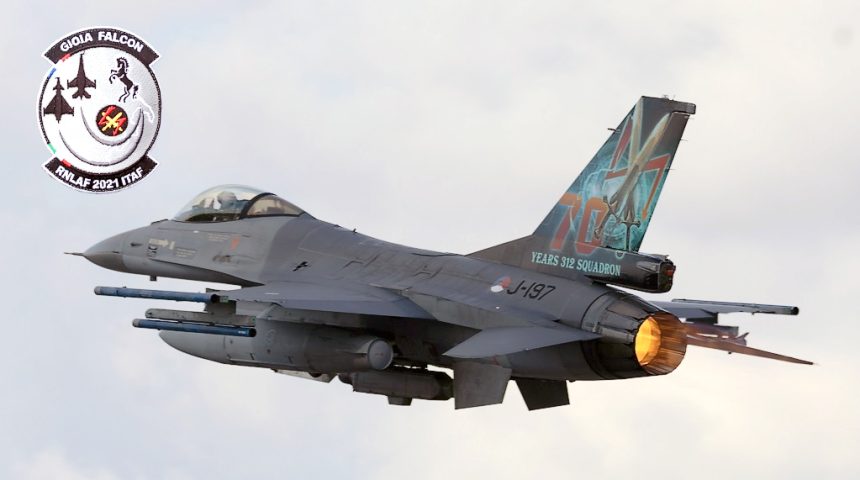11 Dutch F-16s deployed to Gioia del Colle Air Base to practice operations in non-familiar areas and fly COMAO missions.
The Royal Netherlands Air Force deployed 11 of its F-16 Fighting Falcons to Gioia del Colle Air Base in Italy for a two-week joint exercise with the Italian Air Force, dubbed “Gioia Falcon”, from Nov. 12 to Nov. 26, 2021. The fighters belong to 312 Squadron “Bonzo”, which is the last RNLAF unit to operate the F-16 from Volkel Air Base.
The F-16 is slowly nearing the end of its operational life in the Netherlands, after F-16 operations ceased at Leeuwarden with 322 Squadron this summer to make room for the F-35 Lightning II and the remaining aircraft were all moved to Volkel. The latter also used host a second F-16 unit, the 313 Squadron, but this is currently in the process of being converted to the F-35. The F-16 is expected to remain in service until 2024/2025, when it is expected that the F-35 will obtain the Full Operational Capability.
It’s a wrap, we won the war. Together with our Italian allies we brought the enemy to their knees. Great performance of an awesome team. EXERCISE EXERCISE EXERCISE #GioiaFalcon pic.twitter.com/ddegwpNV0U
— Cdt 312 Squadron (@312Cdt) November 25, 2021
We had the opportunity to visit Gioia del Colle to take photos of the flight operations and interview the aircrews during the two Media Days of the Exercise on Nov. 23 and 24.
During our visit we got to see which aircraft were deployed on the flight line, with their serials being J-005, J-014, J-062, J-063, J-136, J-197, J-509, J-512, J-515, J-644. As you can notice, these are only ten of the eleven aircraft in the detachment, as one of the F-16s reportedly suffered an engine stall during a training mission on Nov. 18 or 19 and subsequently performed a precautionary landing at Crotone airport. According to a low-resolution photo posted at the beginning of the exercise, the aircraft should be the twin-seater F-16B J-368.
One of the aircraft, J-197, sported the special tail paint which has been recently applied to celebrate the 70th anniversary of 312 Squadron. The special tail shows the crossed swords and the red lightning bolt of the unit’s insignia, as well as the writing “70 years 312 Squadron”. According to the reports, the first public appearance this F-16 with the new special paint was in early November when the aircraft was at the lead of 14 F-16s during an elephant walk at Volkel Air Base.
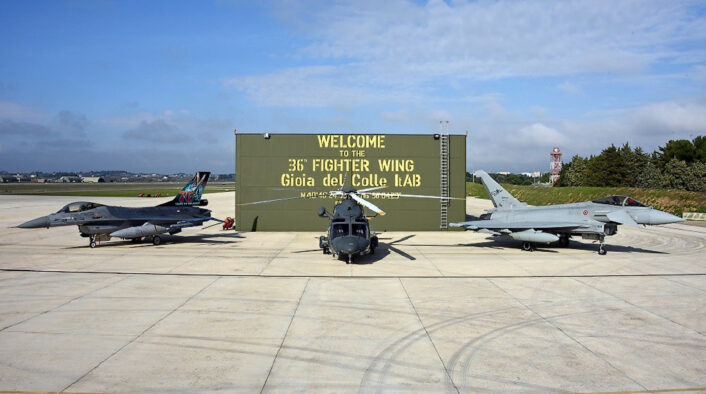
The Gioia Falcon exercise was initially planned for 2020 at Trapani-Birgi Air Base, however the plan had to be postponed for one year because of the COVID restrictions, requiring the choice of a new host base. Even if the preparations for the deployment in Italy were already completed, the new location required the restart of the six-month planning process, including the site surveys and the logistic preparations to support the 11 Vipers (as the F-16s are dubbed by the pilots) and about 150 people, including aircrews and support personnel.
The Italian Air Force assisted its Dutch counterpart in the logistical effort, giving access to briefing and debriefing systems and the ACMI (Air Combat Maneuvering Instrumentation) to allow aircrews to see and analyze the full picture of their mission in order to make consistent debriefings. The Italians also gave space for all the equipment that was brought over and an entire hangar for maintenance. In fact, the RNLAF brought over, in addition to the F-16s and the equipment in the containers, most of the vehicles needed for flight line operations, practicing for forward deployed operations.
Even if 312 Squadron is the last RNLAF F-16 unit, the aircrews are relatively young, with many having only recently joined the ranks after the graduation from the B-Course in Tucson, Arizona, and using this exercise to work towards their combat readiness. The squadron was not able to attend any international exercises abroad during the last two years, again because of COVID, so it was decided to deploy to Italy to practice operations from unfamiliar airfields and in different air spaces. Another reason was to gain experience while integrating with foreign units and different aircraft.
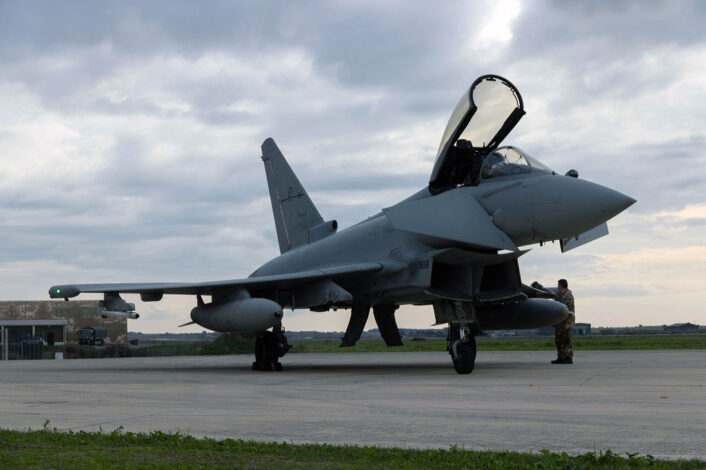
Among the different assets involved in Gioia Falcon with the Dutch F-16s there were the F-2000 Typhoons and HH-139s of the local 36° Stormo Caccia (Fighter Wing) and the F-35As of the 32° Stormo from Amendola Air Base, as well the Italian G550 CAEW and NATO E-3A airborne early warning aircraft and ground-based fighter controllers from the Italian radar units located near the area of the exercise. NATO’s Deployable Air Command and Control Centre based at Poggio Renatico carried out the exercise’s command and control.
Most of the missions of the exercise were flown in the so-called “area Calabria”, covering a large portion of airspace which includes the Calabria region and the Ionian Sea from the surface to FL600 (60,000 ft). This airspace was then divided in the “Red” and “Blue” area, depending on the mission to be flown, but usually the Reds had the larger portion in order for the Blues to simulate deep penetration missions inside the adversary’s airspace.
Training involved multiple types of missions, such as Offensive Counter Air (OCA), with the fighters sweeping the airspace to create a path for strikers, bombing strike missions and Close Air Support (CAS) in support of Joint Terminal Attack Controllers (JTAC), as well as Defensive Counter Air (DCA) and Air Interdiction.
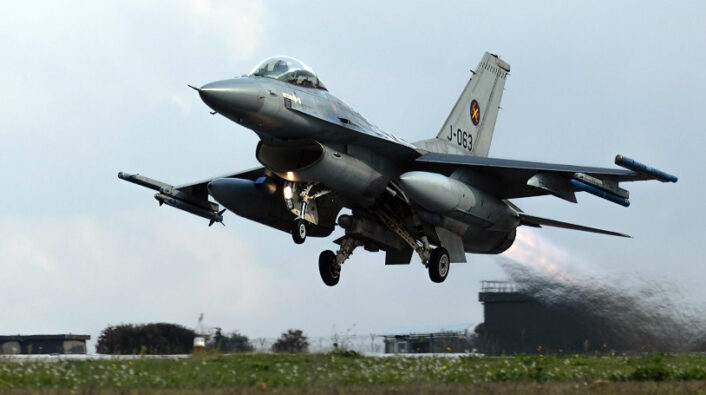
The Commander of 312 Squadron provided some more details about the missions through his official Twitter account, mentioning that the Large Force Employment scenario involved the creation of a no-fly zone to protect civilians in the area of responsibility. The Red forces violated the no-fly zone multiple times, even trying to attack the Blue airfield in Gioia del Colle, before being repelled.
These actions were followed by strikes against several targets, which however gave the Red forces the chance to shoot down a Blue aircraft (obviously only simulated). Considering when the info about this simulated shot down was published, that F-16 might have been the one that performed the precautionary landing, transforming the unexpected event in a new chance for further training. The simulated crash was, in fact, followed by a Combat Search And Rescue operation to recover the pilot.
All these missions were performed both as “stand-alone” packages or as part of COMposite Air Operations (COMAO) with and without the Italian fighters. As a matter of fact, the exercise’s main focus were the COMAOs, but it was also used as an occasion to integrate during close maneuvering (such as BFMs and ACMs) with Italian assets, maintain pilot’s currencies and training upgrades.
Usually, the aircraft flew two waves each day, including night waves, one of those was dedicated to COMAOs and the other for the other training needs. During the first day of our visit, the night wave was dedicated to a COMAO with F-16s and Typhoons. Each wave involved about eight Dutch F-16s and variable numbers of Italian aircraft, with scenarios evolving day-by-day and increasing difficulty.
The exercise generated about 150 missions for an approximate total of 240 flight hours, which helped to consolidate the interoperability among the participating aircraft and to enhance the effectiveness and efficiency while using common standard Tactics, Techniques and Procedures (TTPs). These TTPs are adopted in multinational and complex scenarios and cover the entire spectrum of the missions that can be performed in modern air operations.
The F-35 participation provided a chance to train the integration between fourth and fifth generation aircraft, which are currently in service in both countries, adding training value to the missions. The Lightning II proved once again its versatility in “omnirole” tasks, with its sensors and data fusion allowing the 5th gen aircraft to best lead the mission package in every kind of scenario.
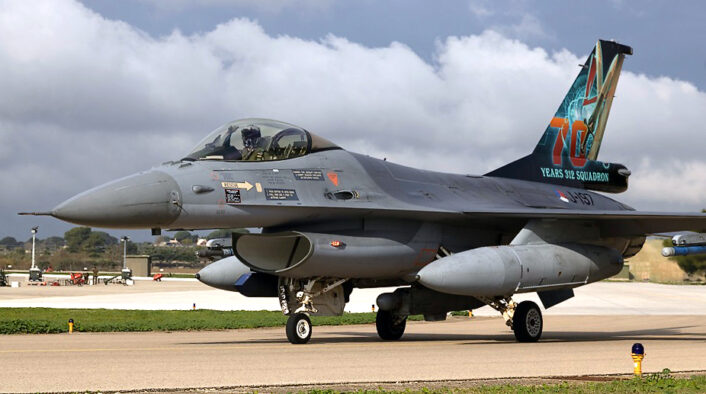
Interestingly, the F-35s took part to Gioia Falcon in the ranks of both the Red and the Blue forces, much like the US Air Force is doing during Red Flag exercises, giving the 4th gen aircraft the chance not only to integrate with 5th gen aircraft but also to practice how to counter them and hunt them down. During our interview, the pilots mentioned that this is becoming the standard also during everyday’s training.
As we reported, during the same timeframe of Gioia Falcon, and precisely on November 21, the British and U.S. F-35Bs embarked on the HMS Queen Elizabeth aircraft carrier practiced cross deck operations with Italian Air Force’s and Navy’s F-35Bs embarked on the ITS Cavour aircraft carrier. Even if the exercise tool place while both ships were in navigation in the Ionian Sea, the same area used by Gioia Falcon, the Dutch F-16s did not integrate with the embarked fighters as the activities of the two exercises were kept separate.
“Exercise Gioia Falcon provided great results. It demonstrated perfect synergy between flight crews and maintenance teams, allowing integration and interoperability among different generation of aircraft and between the air and surface components,” said Colonel Antonio Vergallo, Commander of the 36th Fighter Wing. “It has been a great opportunity to exchange operational experience among NATO pilots and operationally assess the great swing role capability of the Eurofighter in an integrated scenario.”
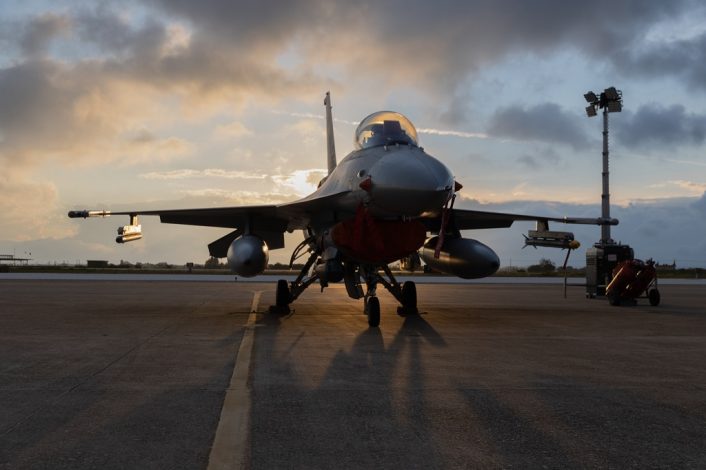
The integration and synergy of the air component with the surface component in these complex multinational scenarios was highlighted during the Close Air Support missions in support of the Joint Terminal Attack Controllers. The JTACs deployed in the area of operations, assigned to the “Fucilieri dell’Aria” (Air Riflemen) of the 16° Stormo, directed the fighters while performing simulated attacks both during day and night.
During our interview, the pilots of both nations highlighted the importance of this kind of exercises to have a chance for a confrontation with other NATO partners. In fact, training together allows to share experiences and lessons learned after the missions, as well as offering a different point of view about how the same mission set is executed by different air forces. This, in turn, allows the continuous refinement of the TTPs to better adapt to future scenarios.
On the other hand, training abroad offers the chance to train in a new unfamiliar environment, draining the situational awareness accumulated while operating from the habitual airfields and forcing the pilots to be more alert. The pilots, in fact, gain valuable training as they need to familiarize with new airspace regulations, new departure and arrival procedures and new reference points. As the Dutch pilots pointed out, only the basic layout of the area was the same they have at home, situated on the coast and composed in part by land and in part by sea from the surface to high altitudes.
The author would like to thank the Italian Air Force and in particular the Public Information Office for the opportunity to visit Gioia del Colle during the exercise Gioia Falcon, as well as the 36th Fighter Wing and its personnel for the hospitality and the help provided during the course of the two Media Days.

